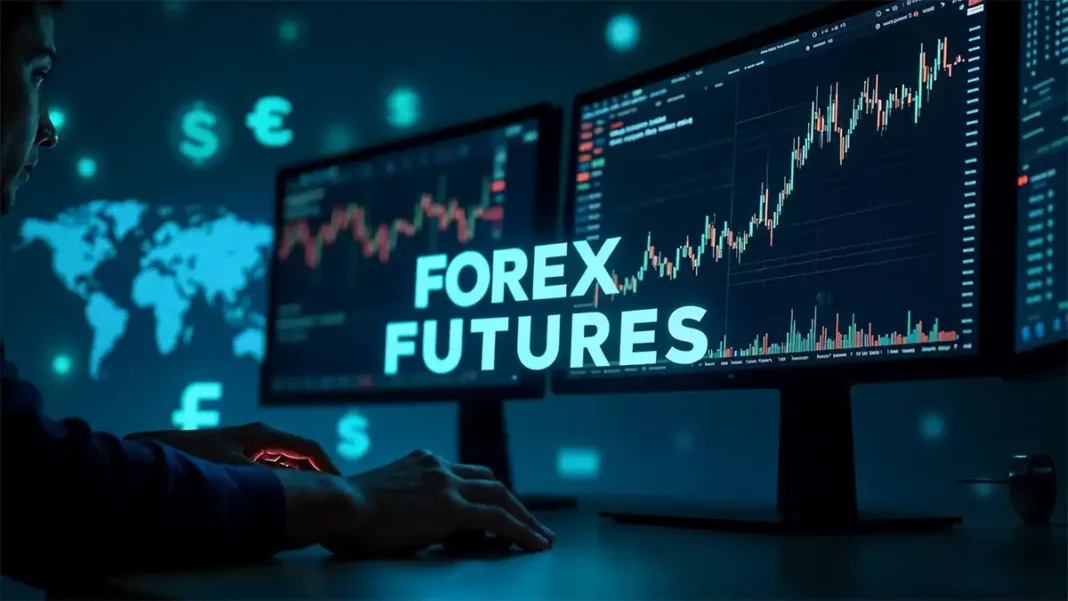Forex futures… that phrase can make your head spin, right? Ever feel like you’re just guessing when you try forex, wishing you had a solid way to understand what’s going on? Ever get the feeling there’s got to be a way to really get a handle on how currencies move? Let’s talk about forex futures and what they’re all about. In this piece, we’ll break down these contracts, how you actually trade them, where you can do it, what they’re useful for and the tools you’ll need to make sense of it all.
Getting the Lowdown
So, what are forex futures anyway? Think of them as promises, like a verbal agreement, to buy or sell a certain currency at a set price, but you’re doing it for a date in the future. It’s not like those quick buys and sells you do on the spot; these deals happen on proper, regulated exchanges. That means things are more clear and you’re less likely to get tricked by some unreliable dealer. This setup lets you try and see where currencies might be going, or protect yourself if things go wrong. And the fact that these contracts are all the same, standardized, makes them pretty handy.
The Real Deal on the Details – Forex Futures
Each forex futures contract has its own specifics: how much currency you’re dealing with, which currencies and when the deal actually goes down. Imagine a Euro contract, maybe it’s for, say, 125,000 Euros. Knowing these details is absolutely key for figuring out how much you might gain or lose on a trade. It helps you plan your moves and keep risks in check. Standardized contracts mean everyone’s playing by the same rules, which is just good for keeping things fair.
How Trading Actually Works – Forex Futures
To start trading forex futures, you’ll need a broker who can get you into the futures exchanges. You can buy (go long) if you think a currency’s value will go up, or sell (go short) if you think it’ll go down. You’ll need to put up some money (margin), which is how much you need to start and keep the trade going. To really get good at trading forex futures, you’ve got to understand how the market works and how to manage your risk. Good traders often use a mix of looking at charts (technical analysis) and understanding the big picture (fundamental analysis) to make smart decisions.
Where You Can Actually Trade
There are a few big exchanges where you can trade forex futures, like the Chicago Mercantile Exchange (CME), Eurex and the Tokyo Financial Exchange. The CME is a big one, offering a wide range of currency pairs and contract sizes. Each exchange has its own hours, rules and contract specifications. Choosing the right one for you depends on what you want to trade. These exchanges keep things moving and clear, which is really important.
Breaking Down the Contract Details – Forex Futures
Forex futures contracts have set dates when they end. Usually, they’re settled in cash, but sometimes you can get the actual currency. You’ve got to know things like tick size and value to figure out your potential profits and losses. Having different contract months available lets you plan for different timeframes. Standardized contracts make the whole trading process easier.
What They’re Actually Used For
People use forex futures for a few things: trying to guess where currencies are headed, protecting themselves from losses and trying to find price differences between markets. If you’re trying to guess, you’re trying to make a profit. If you’re protecting yourself, you’re trying to avoid losses. For example, someone buying goods from overseas might use forex futures to lock in a good exchange rate for a future purchase. And people who find price differences between markets try to make money from those differences. Forex futures are useful for all sorts of people. They also help companies manage their money when dealing with other countries – uses.
The Tools You’ll Need – Forex Futures
To trade forex futures well, you’ll need good tools. Looking at charts and indicators (technical analysis) helps you spot trends. Understanding things like interest rates and inflation (fundamental analysis) helps you see a currency’s true value. Using both gives you a better view of the market. Traders use charting platforms, economic calendars and news to stay informed. Using these tools helps you make smarter decisions. Using these tools is a key part of a successful forex futures trading plan.
Staying Ahead of the Game: Market Monitoring
Keeping an eye on the market is non-negotiable when you’re dealing with forex futures. Things change fast and if you’re not paying attention, you can get caught off guard. News events, economic reports and even political developments can send currency values swinging. Make it a habit to check the latest market news, follow economic calendars and keep an ear to the ground for any whispers that might affect your trades. Don’t just rely on gut feeling; back up your decisions with solid information. Knowing what’s happening in the world is just as important as knowing your charts.
Building a Solid Trading Plan: Your Roadmap to Success
You wouldn’t set out on a road trip without a map, right? The same goes for forex futures trading. A solid trading plan is your roadmap to success. It should include your entry and exit strategies, risk management rules and the specific market conditions you’re looking for. Don’t just jump into trades on a whim. Take the time to think things through, write down your plan and stick to it. Review your plan regularly and adjust it as needed. A well-thought-out trading plan will help you stay disciplined and avoid making emotional decisions that can cost you money
Tying It All Up – Forex Futures
Forex futures offer a structured and clear way to get into the currency market. Knowing the details, how trading works, where to do it, what they’re for and the tools you need is key. Whether you’re experienced or just starting out, forex futures provide opportunities to try and make money or protect yourself. Knowing the basics and staying informed helps you navigate the currency market better.
FAQs – Forex Futures
What are forex futures, in simple terms?
They’re like promises to buy or sell a currency at a set price, for a future date.
Where can you actually trade forex futures?
On exchanges like the CME, Eurex and the Tokyo Financial Exchange.
How do you figure out profit and loss?
It’s based on the contract size, tick value and the difference between your buy and sell prices.
What are they mainly used for?
Trying to predict prices, protecting against losses and finding price differences.
What tools do you need?
Looking at charts and understanding the big picture (technical and fundamental analysis).
Are they risky?
Yes, because of market changes and using borrowed money (leverage).
How does the margin thing work?
It’s the money you need to put up to start and keep the trade going.
Also Read:
A Comprehensive Analysis of L&T Finance Holdings Share Price
IOCL Share Price: Decode Market Trends
David William comes from an Engineering background, with a specialization in Information Technology. He has a keen interest and expertise in Web Development, Data Analytics, and Research. He trusts in the process of growth through knowledge and hard work.


